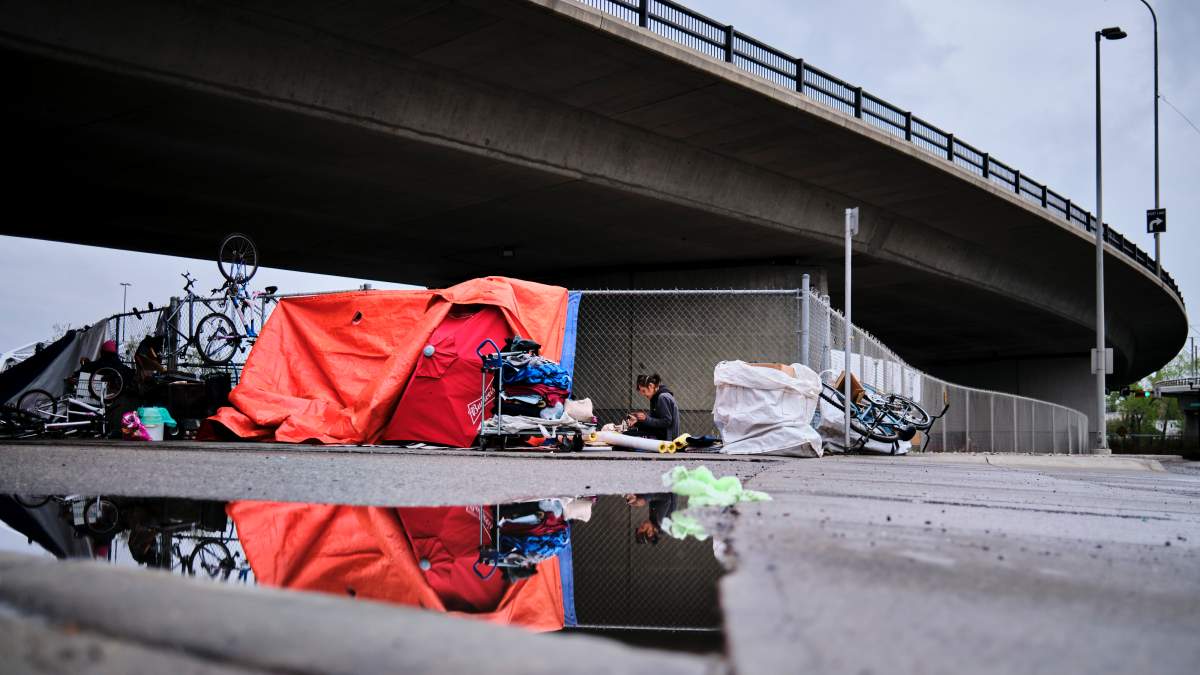There are more first-timers at homeless shelters in Calgary than you think, a study from the University of Calgary released Wednesday suggests.

The university’s School of Public Policy said there is a “misconception that people who experience homelessness are the same people, month in and month out,” when, in fact, people who use emergency shelters are “not necessarily the same people who will use them next month.”
“Knowing that there are approximately 1,200 people per night staying in a homeless shelter in Calgary is only understanding a small part of the problem,” said Ron Kneebone, scientific director of social policy and health research at the School of Public Policy.
“What we show in this report is, in fact, the people who are staying in one night are not going to be the same people who are staying there the next night — there’s a lot of turnover.”
The study — called Social policy trends: First admissions to homeless shelters — looked at homelessness in the city every month from January 2014 to December 2019. Over this period, an average of 359 individuals per month slept in a Calgary emergency shelter for the first time, the study said. In an average month, 27 per cent of shelter beds were emptied and filled again by people new to the system, according to the study.
“There was a decline in the number of first-time users of the shelter system from 2014 to 2017 but the number remained more or less constant to the end of 2019,” the study reported. “In 2019, the monthly average of new entrants to the shelter system was 350 individuals, a fall from the average of 436 in 2014.”
‘On the edge’

Get breaking National news
In 2019, more than 4,200 people slept in a Calgary homeless shelter for the first time in their lives, according to the study.
“In Calgary at any time, there are thousands upon thousands of people on the edge. They’re a paycheque away or an unexpected bill away from falling into homelessness and being forced to use a homeless shelter,” Kneebone said.
“The problem of homelessness is much bigger than just thinking about those 1,200 people in homeless shelters.”
He said people need to understand that those in poverty are moving between housing options and “where you are at any particular time depends on what’s happened to you that month.”
The study said there is “not a rigid boundary that separates people who are securely housed from those who are not.”
The main message is that homelessness is a problem of poverty, unstable income and high housing costs.
“People sometimes think it’s got to do with drug addiction and mental illness; they play a role,” Kneebone said.
“But for the vast majority of people who move through homeless shelters, they’re doing so because they’re poor and they have no other choice.”
Government needs to step up
The government shouldn’t only be relying on the Calgary Homeless Foundation to solve the issue, Kneebone said.
“It’s really society’s problem. All levels of governments have a role to play here to support people who have very little means to remain housed,” he said.
“Government policy has a role to play here to provide better levels of income support. Almost everyone who stays in the homeless shelter is a single person, and the level of income support provided to a single person is extremely low in Alberta, as it is in every province.”
Eventually looking at pandemic’s impact
Once the pandemic is in the rearview, researchers plan to look at homelessness through that lens.
“On the one hand, people will be avoiding shelters because you’re sleeping close together and the risk of infection is higher than maybe sleeping on a friend’s couch. On the other hand, a lot of people have lost their jobs, of course, and lost income during this time, and they may have been forced into shelters,” Kneebone said.
“I really don’t know which direction it has gone. But it is something we’re going to be looking at for sure.”
‘We need to act very quickly’
Chaz Smith, founder of #BeTheChangeYYC, said the study is “alarming, in general, but it’s not necessarily news to us because we see these trends.”
In response to the pandemic, the homeless population is “looking more agitated and stressed out” than Smith has seen in previous years.
“As soon as the lockdown lifted, we did see a trend of new individuals experiencing homelessness on the streets, and we recognize them very easily because they come to us as street outreach. They see our vests,” he said.
“They recognize that we are people that can help. They start asking us questions. They have no idea about the shelters, where they are, how to access them. That’s how we recognize right away that people are new to homelessness.”
Canada has a great social safety net — with CERB and Employment Insurance — but it creates the potential for “impending disaster” when those supports are taken away, Smith said. His fear is a resulting increase in homelessness.
“We need to act very quickly to create some additional rapid housing programs and open up more affordable housing so that when the safety nets are taken away, we don’t see a large spike that we are not able to deal with,” he said.








Comments